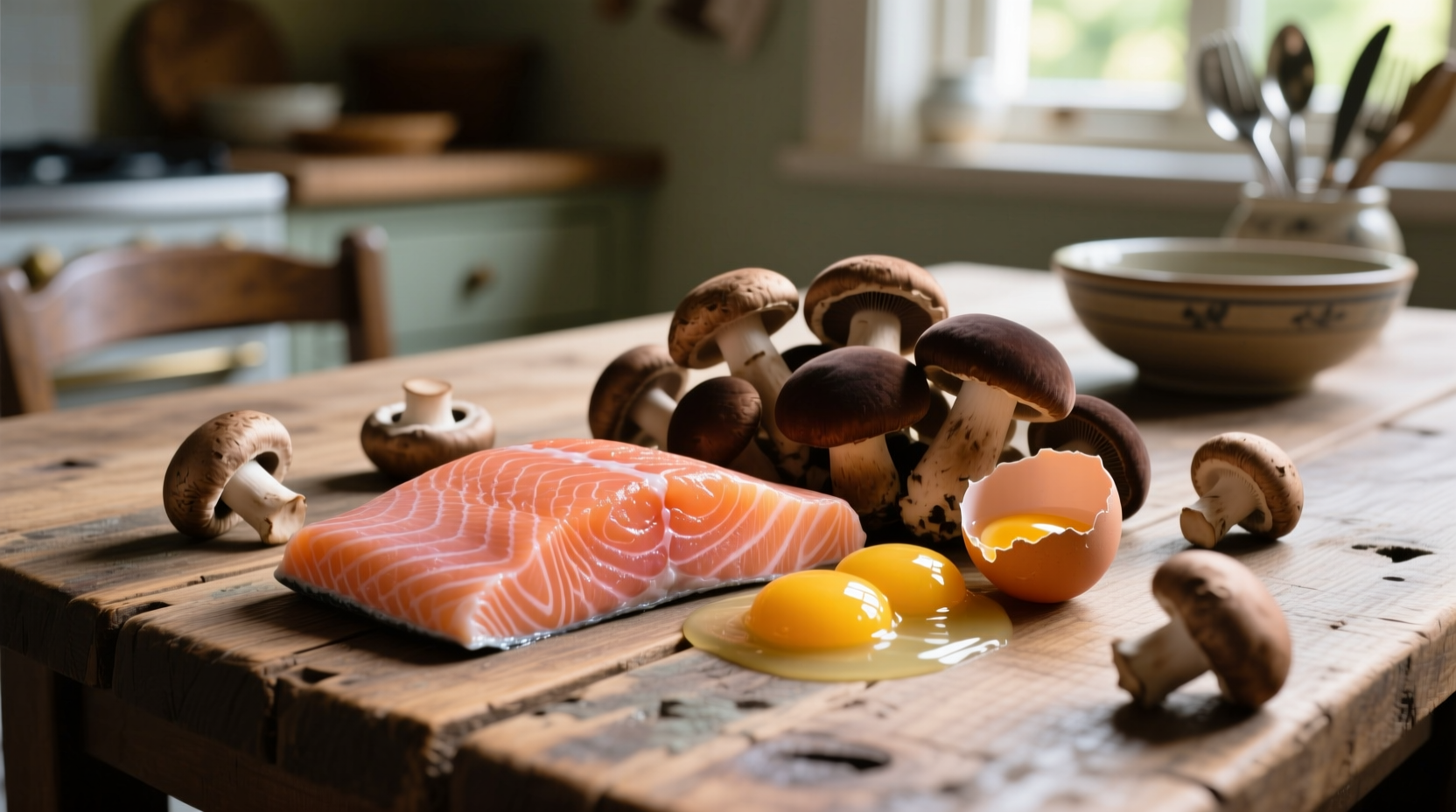Getting enough vitamin D through your diet is crucial for maintaining strong bones, supporting immune function, and promoting overall health. While sunlight exposure triggers vitamin D production in your skin, many people—especially those in northern latitudes, with darker skin tones, or who spend most time indoors—rely on dietary sources to meet their needs. This guide delivers science-backed information about which foods contain vitamin D, how much you'll get from each, and practical ways to incorporate them into your daily meals.
Natural Vitamin D Powerhouses
When discussing what foods have vitamin d in them, certain animal-based foods stand out as naturally rich sources. These foods contain vitamin D3 (cholecalciferol), the form your body utilizes most efficiently.
Fatty Fish: The Top Source
Fatty fish represent the most potent natural food sources of vitamin D. A single 3-ounce serving can provide well over your daily requirement:
- Salmon: Wild-caught salmon delivers approximately 600-1,000 IU per serving, while farmed salmon provides about 250-300 IU
- Mackerel: Atlantic mackerel offers around 360 IU per 3-ounce portion
- Sardines: These small fish pack about 177 IU per 3.75-ounce can
- Herring: Contains approximately 214 IU per 3-ounce serving
According to the National Institutes of Health Office of Dietary Supplements, regular consumption of fatty fish can significantly contribute to meeting your vitamin D requirements, especially during winter months when sun exposure is limited.

Fortified Foods: Essential Dietary Contributors
Since few foods naturally contain vitamin D, many countries fortify staple products. This practice began in the 1930s to combat rickets, a bone-softening disease caused by vitamin D deficiency. Understanding which foods have vitamin d added helps you make informed choices.
| Food Source | Vitamin D per Serving | % Daily Value* |
|---|---|---|
| Cow's milk (fortified) | 115-130 IU per cup | 15-16% |
| Plant-based milks (fortified) | 100-144 IU per cup | 12-18% |
| Orange juice (fortified) | 100 IU per cup | 12% |
| Breakfast cereals (fortified) | 40-100 IU per serving | 5-12% |
| Egg yolk (large) | 41 IU | 5% |
| UV-exposed mushrooms | 400-2,300 IU per 3 oz | 50-288% |
*Based on 800 IU daily value for adults according to NIH guidelines
Plant-Based Vitamin D Sources
For those following vegetarian or vegan diets, what foods have vitamin d naturally? The options are limited but valuable:
UV-Exposed Mushrooms
Mushrooms are unique as the only plant-based food that can provide vitamin D2 (ergocalciferol) when exposed to ultraviolet light. Portobello, shiitake, and maitake mushrooms treated with UV light can contain substantial amounts—some providing over 100% of your daily needs in a single serving. The USDA Agricultural Research Service has documented that UV-treated mushrooms maintain their vitamin D content even after cooking.
Egg Yolks
While not plant-based, egg yolks offer a valuable option for vegetarians. One large egg yolk contains about 41 IU of vitamin D. The amount can increase significantly if chickens are fed vitamin D-enriched feed or have access to sunlight.
Maximizing Vitamin D Absorption
Knowing what foods contain vitamin d is only part of the equation. Your body absorbs vitamin D more effectively when consumed with fat. Consider these practical tips:
- Pair vitamin D-rich foods with healthy fats like avocado, olive oil, or nuts
- Cook mushrooms in oil to enhance absorption of their vitamin D content
- Choose full-fat fortified dairy products over non-fat versions for better absorption
- Combine vitamin D foods with magnesium-rich foods (like leafy greens) since magnesium helps activate vitamin D
Seasonal and Geographic Considerations
Your ability to get vitamin D from food becomes particularly important during certain times and in specific locations. Research from the National Center for Health Statistics shows that vitamin D deficiency rates increase significantly during winter months, especially above 37° latitude where sunlight lacks sufficient UVB radiation for vitamin D synthesis from November through February.
For individuals living in northern regions, incorporating vitamin D-rich foods becomes essential year-round, but particularly during these darker months. Those with darker skin tones may need to be especially mindful of dietary sources, as melanin reduces the skin's ability to produce vitamin D from sunlight.
Practical Daily Integration
Here's how to easily incorporate vitamin D foods into your routine without drastic diet changes:
- Breakfast: Fortified cereal with milk + scrambled eggs with mushrooms
- Lunch: Tuna salad sandwich on whole grain bread
- Dinner: Baked salmon with roasted UV-exposed mushrooms
- Snacks: Fortified orange juice or plant-based milk
For those following specific dietary patterns:
- Vegans: Prioritize UV-exposed mushrooms and fortified plant milks/juices
- Lactose-intolerant: Choose fortified almond, soy, or oat milk
- Gluten-free: Many fortified cereals are naturally gluten-free—check labels
Limitations of Food Sources Alone
While understanding which foods have vitamin d in them is valuable, it's important to recognize that diet alone may not provide sufficient vitamin D for everyone. The Endocrine Society notes that most people need additional sources beyond food to maintain optimal levels, especially during winter months or with limited sun exposure.
If you're concerned about your vitamin D status, consult with a healthcare provider who can order a blood test (25-hydroxyvitamin D test) to determine your levels and recommend appropriate supplementation if needed.











 浙公网安备
33010002000092号
浙公网安备
33010002000092号 浙B2-20120091-4
浙B2-20120091-4